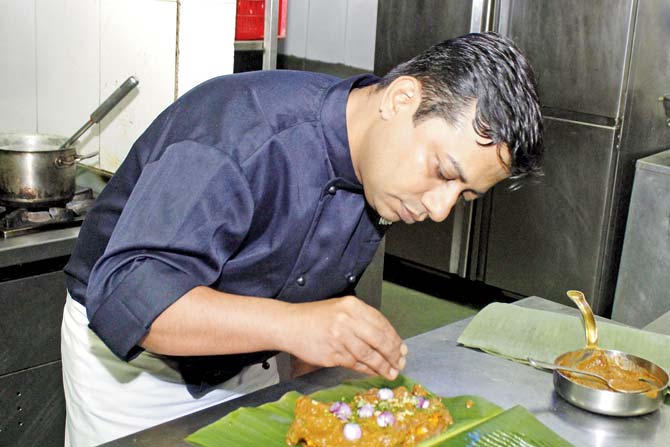29 January,2017 10:48 AM IST | | Anju Maskeri
Chef Milan Gupta tells you how to go en papillote, i.e. cook in a parchment


Pic/Poonam Bathija
It's a given that whenever Chef Milan Gupta of Café Haqq Se wants to prepare the Chicken Chettinadu -- Tamil Nadu's spicy signature -- he will employ the En Papillote technique. For the uninitiated, it's a French technique that involves wrapping the food in parchment paper, foil, corn husks, or anything that is oven-safe. "The Chicken Chettinad is packed with strong spices like garam masala, Madras onion and red chillies. Due to the complexity of the masalas involved, some flavours remain predominant, while the rest tend to lose their essence when exposed to heat. This technique helps retain the original flavour of the ingredients," says Gupta.
To drive home his point better, he gives us an instance -- using banana leaves. "We first marinate the chicken in the masalas for 30 minutes. You need to ensure that the flavouring agents seep in well. Once it's within the envelope, you don't have control over them," he says as he goes on to place the chicken on banana leaves, seal it with tooth picks and place it in the oven. "You can even use strings, but ensure it is sealed well," he adds. In order to check whether the meat is cooked, he suggests using a needle to pierce it. "Don't do it at the start because the vapours that are formed will escape right then," he says. The chef adds that the best part of cooking en papillote is that your food doesn't run the risk of getting burnt because it's not exposed to direct heat.
"It helps when you're cooking meats like lamb and chicken. It's fast and uncomplicated in execution, once you get the knack and understand the principles that underlie the method," he says, as he serves us a steaming hot plate of chicken chettinadu.